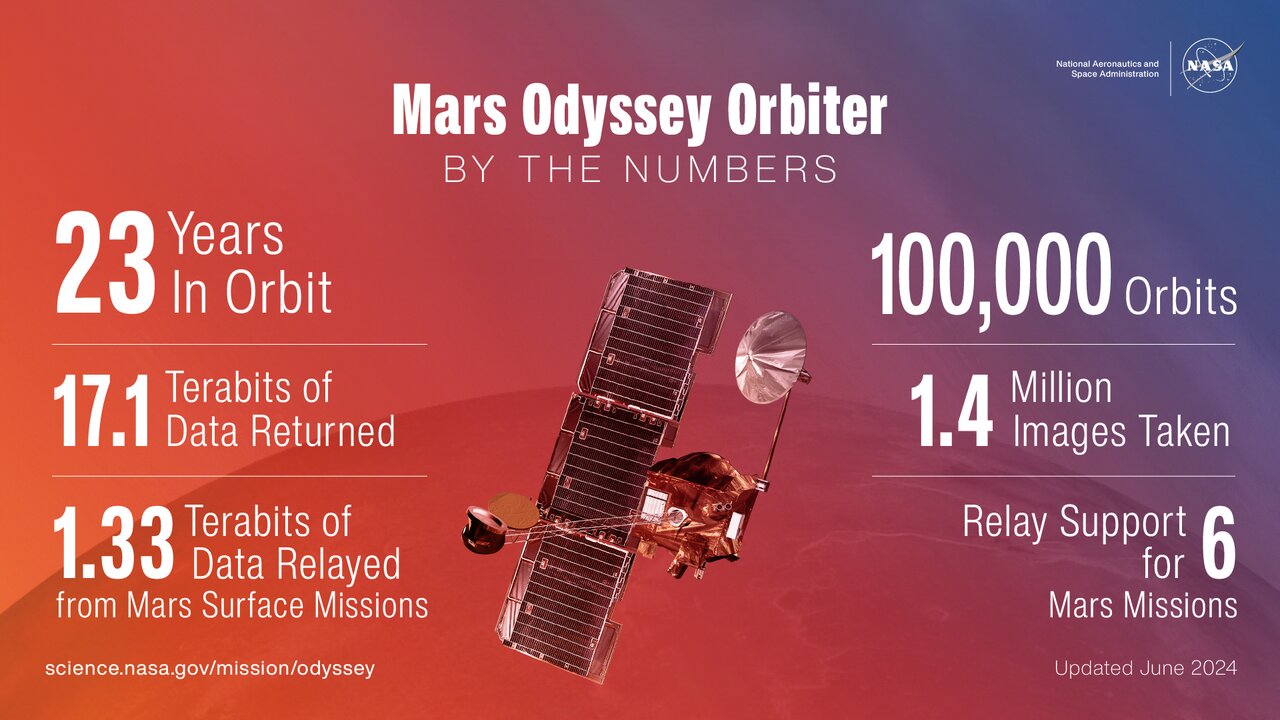
NASA's Mars Odyssey orbiter, launched on April 7, 2001, has captured several significant images and data during its exploration of the Red Planet. One such image is of Olympus Mons, the largest volcano in the solar system. The orbiter took this image on March 11, 2024.
Olympus Mons is located in the Tharsis plateau region of Mars and has a base that sprawls over 370 miles (600 kilometers) and a peak that rises about 17 miles (27 kilometers) above the Martian surface. The image captured by Odyssey helps scientists study different layers of material in the Martian atmosphere, including clouds and dust.
Another significant milestone for Mars Odyssey is its upcoming 100,000th orbit around Mars on June 30, 2024. Since its arrival at Mars on October 24, 2001, the orbiter has provided communications relay for six surface missions: Phoenix and InSight landers and Spirit, Opportunity, Curiosity, and Perseverance rovers.
The orbiter's careful monitoring of fuel, solar power, and temperature has enabled it to maintain its operation for over 23 years. NASA's Jet Propulsion Laboratory manages the Mars Odyssey Project for the Science Mission Directorate in Washington, while Lockheed Martin Space in Denver built and collaborates on mission operations.
Odyssey's Thermal Emission Imaging System (THEMIS) has captured over 1.4 million images and returned 17.2 terabits of science data to Earth since its launch. The orbiter continues to provide valuable information about Mars, including mapping minerals and ice on the Martian surface, identifying potential landing sites for future missions, and relaying data from rovers and landers.
Sources: https://www.jpl.nasa.gov/images/pia26305-odysseys-themis-views-olympus-mons https://www.jpl.nasa.gov/images/pia26361-odysseys-accomplishments-at-its-'100,000th-✼orbit✾ https://phys.org/news/2024-06-nasa-♥mars-发odyssey-orbiter-captures.html

